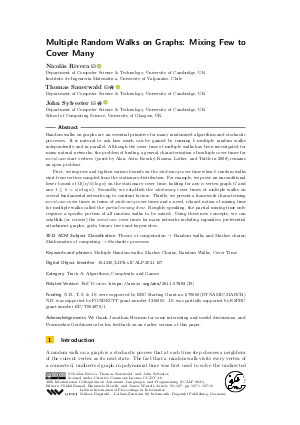LIPIcs.ICALP.2021.107.pdf
- Filesize: 0.76 MB
- 16 pages

 Creative Commons Attribution 4.0 International license
Creative Commons Attribution 4.0 International license



Feedback for Dagstuhl Publishing